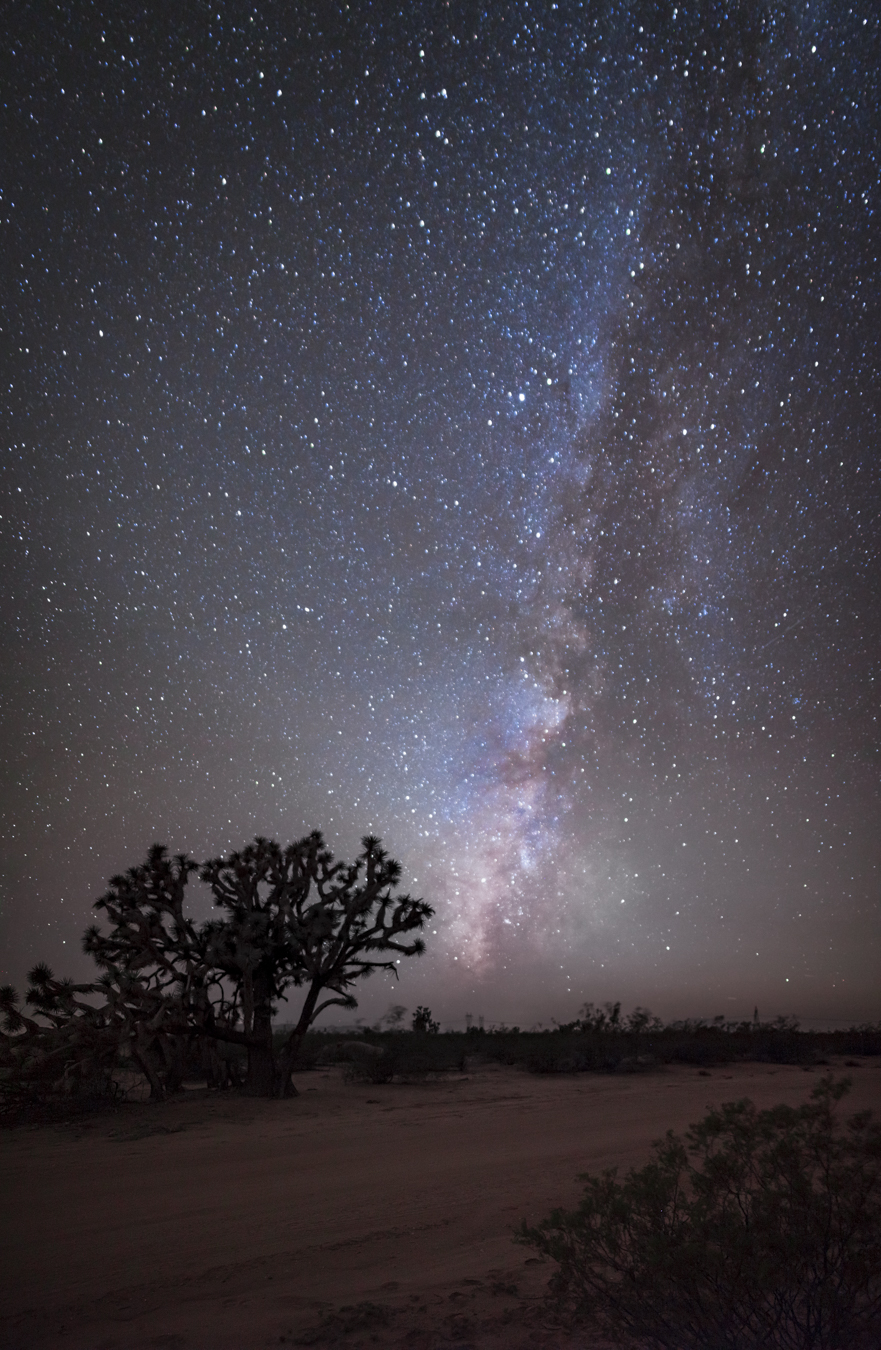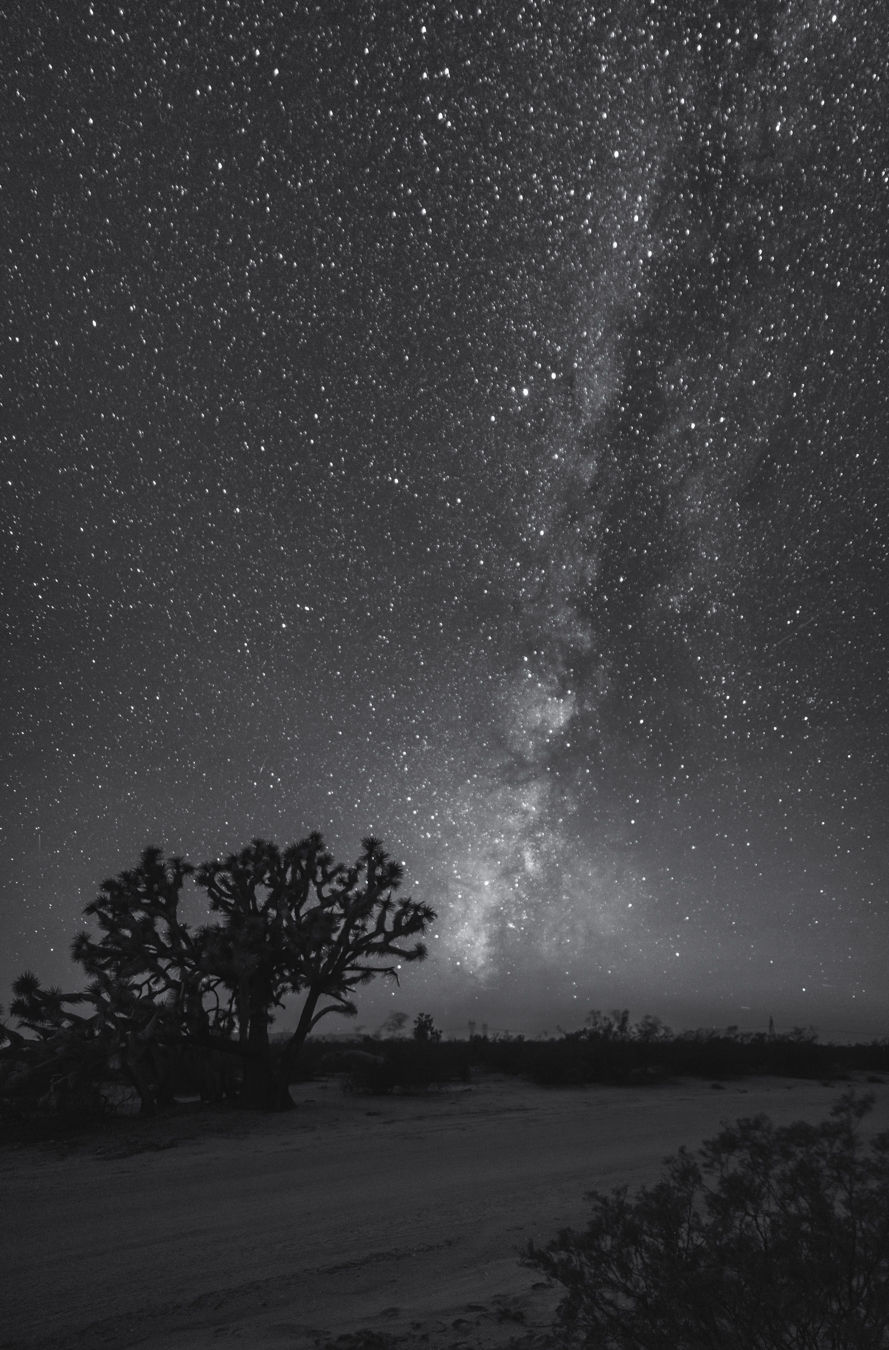Last evening, I ventured out with Barry Stewart to a location west of Wickenburg, AZ along a stretch of Highway 93 called the Joshua Tree Parkway. We exited the highway and followed an “unimproved” road into the desert, among the Joshua trees. We located a good site, where we set up our equipment and were ready to start shooting when the last light of the sunset disappeared from the horizon.
This picture features the Milky Way and this week was our last opportunity to photograph it until next spring. Because of earth’s journey and rotation around the sun, some times of year are better than others to witness the galactic core. (That’s the dense aggregation of stars at the bottom end, just visible above the horizon.) If you’re in the Northern hemisphere it is visible at night from March till October, with prime viewing times from late April till late July. At other times of year (winter) the core is in the sky during the day, rendering it invisible.

As with any photograph, I strive to create an interesting composition. A photograph containing the Milky Way alone, for example would not be all that interesting. In this instance, I was able to include a very unusual tree, the Joshua tree in the foreground. I also tried to convey a sense of the extent of the Milky Way in this photograph. Looking up into the night sky, you can see it rising from the southwest and arching overhead to the northeast at this time of year. To capture more of its height, I rotated the camera vertically, taking 10 photographs at 5 degree intervals. I stitched them together using Photoshop to create a vertical panorama.
I was curious to see how this scene might look in monochrome, so I converted one of my images to black and white.

I’m not surprised that the B&W version came out fairly well. It’s the type of image that’s not so much about colour but rather tonality ( tonal range or “tonality” is mainly an expression of contrast). And, since there is not a lot of colour to be seen in a night picture, monochrome works just fine.
Our proximity to Phoenix and its air traffic meant that we had an ongoing parade of “moving stars”. Because all the images I took are long exposures (15-20 sec.), passing aircraft leave streaks of light across the celestial display. I think I’ve removed most, if not all of them.

Lovely!
A fine composition, Peter. Congratulations!